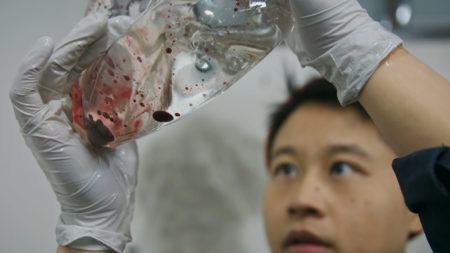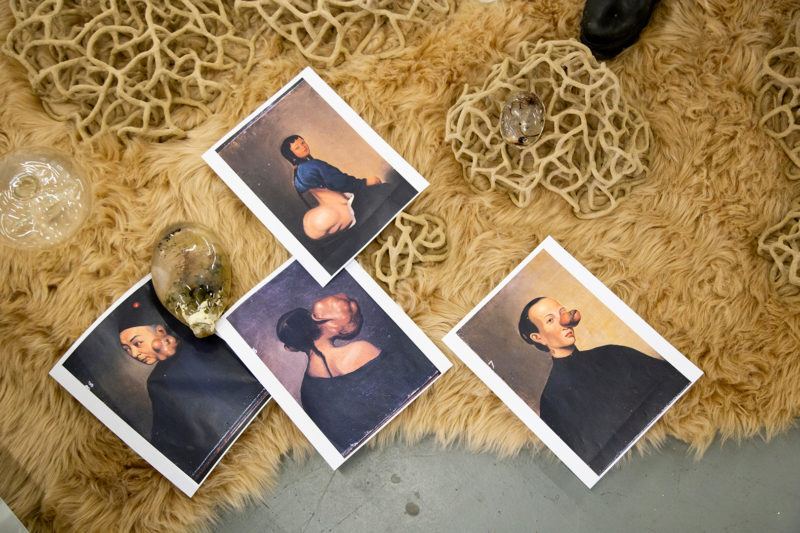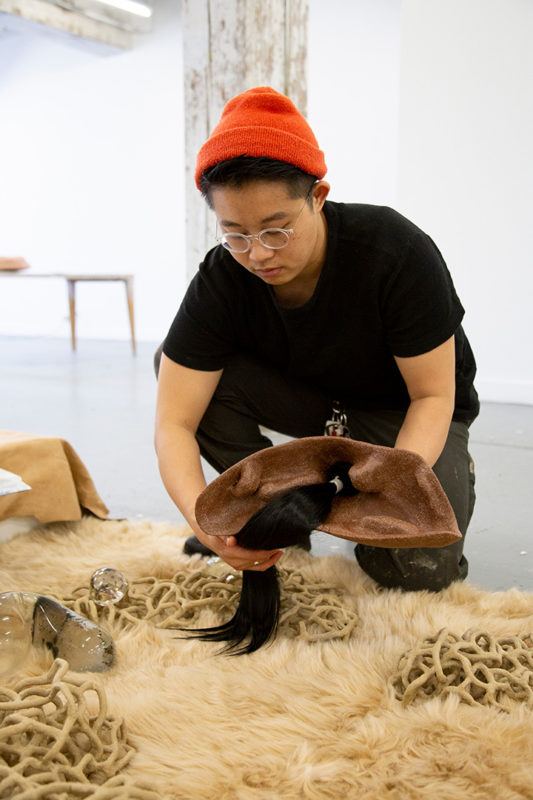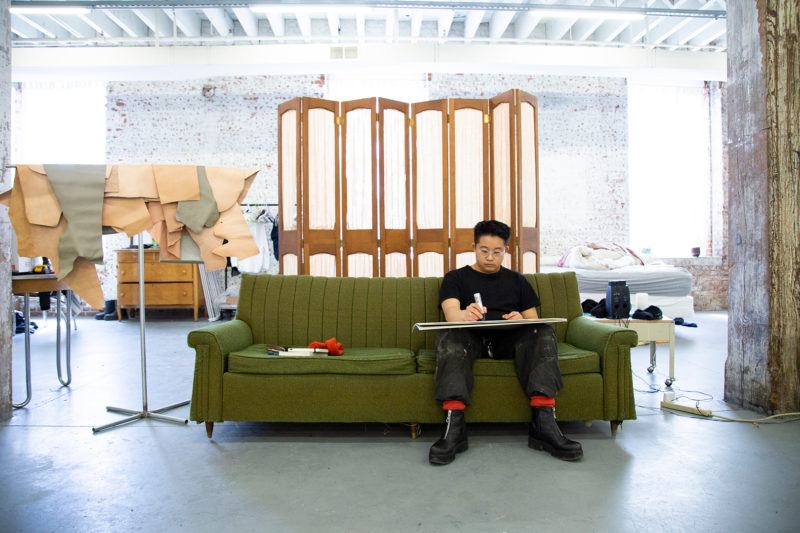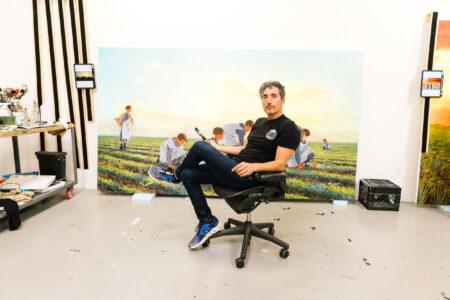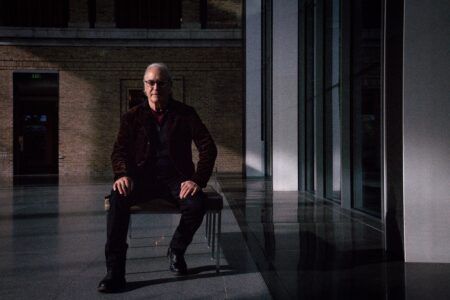
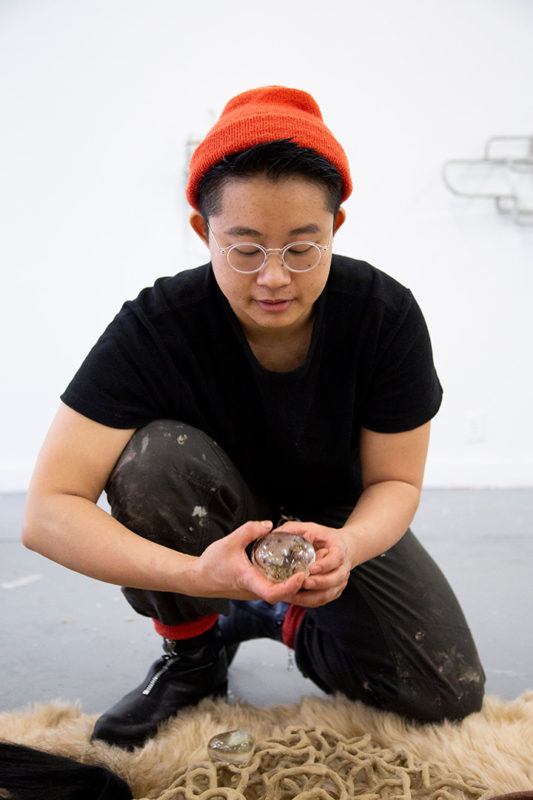
In the Studio
Through examinations of ceramics and nineteenth-century medical portraiture, Jes Fan considers the symbolism and economics of biological substances.

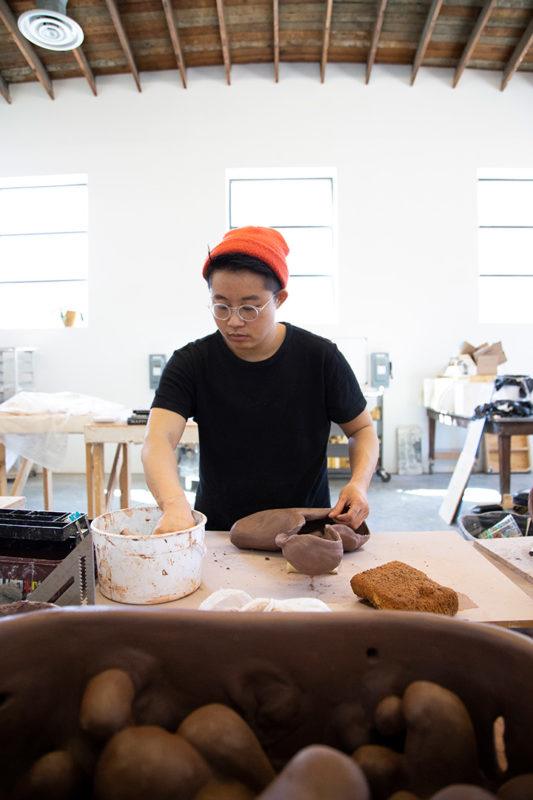

Art21What have you been working on during your Bemis Center residency in Nebraska?
Jes FanI’m playing with ceramics, a medium that I’ve never used. There’s a lot of trial and error, but I’m in love with the material. My previous materials, like glass or silicone, require you to wear gloves; you can only shape with an extension of your hand, often with metal tools. With clay, I can really feel the tactility of the object. Being able to have feedback with another consciousness is very calming and healing. There’s a lot of room for play. It’s very freeing.
Almost like learning a new language. What prompted you to pivot into ceramics?
I have a very open personality. I’m like, “Oh, that’s a material I’ve never tried before.” I also do a part-time job fabricating for other artists. I worked for other ceramicists like Simone Leigh, Michael Joo, and Janine Antoni. Even just by observing, the texture achieved is really different, so it’s definitely a medium I’ve become interested in.
People say artists are—or being creative is—ultimately just problem solving. What’s better than problem solving alone is to have a group of people and crowd source, especially with people that are really good at what they do. You’re able to ask, “Why is this cracking? What should I do?” A great advantage of being an artist is just being part of a community that opens doors not just into the art world, but also into science or literature.
What interests you in working with substances like melanin, testosterone, and estrogen?
I’m interested in how you expand upon that immediate association of matter that is symbolic of an identity. Why is testosterone symbolic of that? I’m also interested in using the economy. What does it mean for me to pay someone to make [melanin] for me, and to use that as art? I’m interested in the nuances and the philosophical significance in buying it and holding a tube of it in your hand. You know melanin is more expensive than gold, right? It’s $240 a gram.
What is it like paying someone to make these substances?
It’s a readymade, you know? When I first started transitioning, buying that bottle of testosterone through my healthcare, it was $3 something with my healthcare system. I was like, “This is how much masculinity costs as a readymade.” That concept really tripped me. This is how much it costs if I had it tailor made for me. That idea is really funny, really absurd, and also perfectly describes the anxiety of being a person in an age where the body is reconceptualized in a digital and molecular term. I kept that receipt.
What other projects are you working on right now?
I’ve been looking up a lot of images by Lam Qua, a Chinese painter from the nineteenth century. They’re highly erotic images. These paintings were framed and hung in the waiting room of Peter Parker, a medical missionary who studied at Yale. He would travel to China to spread the word of God—and focused especially on outward-appearing trauma so you can more explicitly say, “This is a work of God.” I’m really interested in excavating this history because it’s evidence of a time when race was not taxonomized as a category—that we rely on science to establish the idea of race and the objectivity of medical science. These are possibly the first images that Westerners saw of Chinese people.
I’m making a film over this set of paintings in relation to my top surgery. I enjoy using film as a way to inform my audience of my more conceptual concerns because my work can lean into being very beautiful. I’ve been casting people’s bodies and making glass tumors that fit on their crevices. I’m obsessed with these images. There’s this obsession of gaze and shock and horror, and I have yet to digest it.

